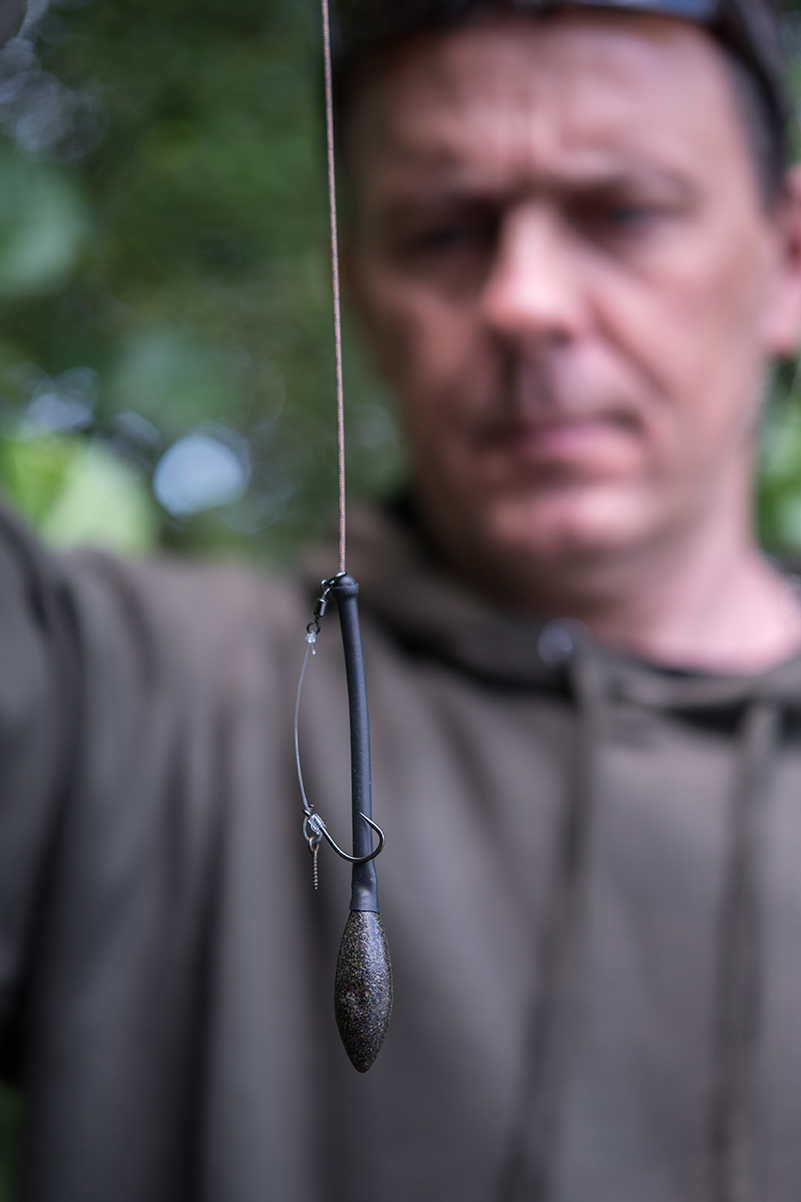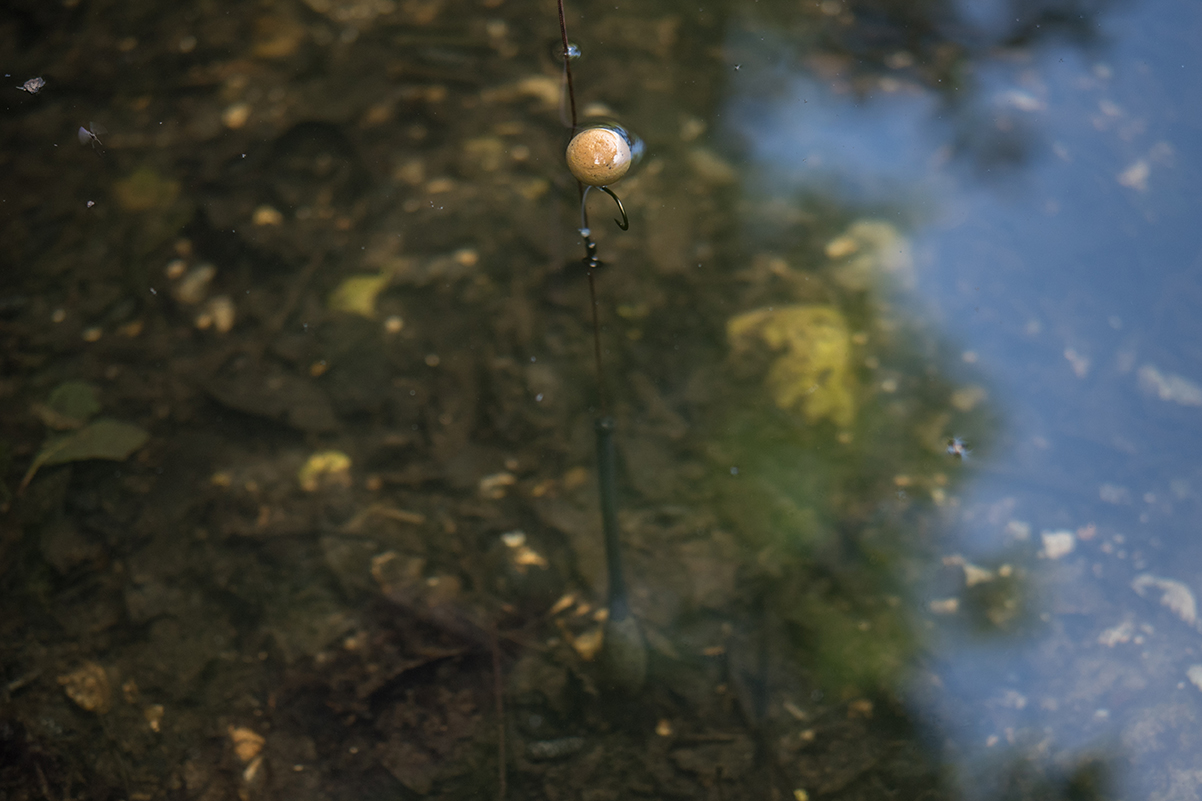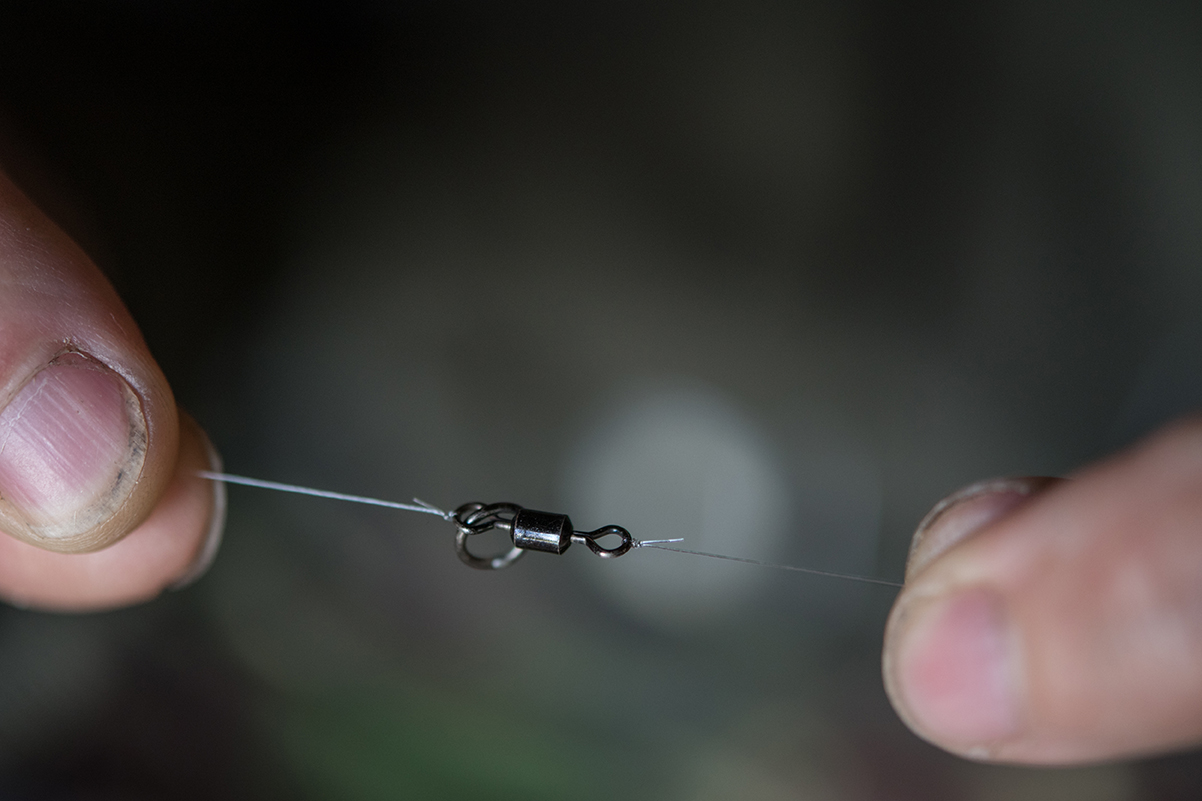The chod rig for me is really when you want to cast at showing fish, an opportunist rig when you don’t really know what you’ll be landing on. Another time chod’s can be effective is before a spot is completely cleaned off, before they start feeding aggressively. I usually find that fish won’t feed like this until summer so have always found them to be a good Spring rig, or a good early-season rig. I like to keep my chods simple and not over-complicate them, so here’s a few valuable tips and a quick demo of how I tie mine up.
.jpg)
Tip 1: Lead Size
My first bit of advice when fishing chod rigs would be to not use too bigger a lead. You’re not relying on the weight of the lead to set the hook when a carp takes you hook bait as is normally the case when fishing off the lead, so there’s no need to use a heavy lead. A heavy lead can cause trouble being so close to your hook hold during the fight and will also bury further into the weed you’re fishing over. A smaller lead can sometimes lay on top of the weed which is a great advantage for when you hook a fish, as it’s less likely to take the weed with it, causing less resistance during the fight.

Tip 2: Quality Pop-Up
It’s vital to have a good quality pop-up as your hook bait on a chod rig. I usually go for around a 15mm bait, and one that is going to stay up for long periods of time. There’s a test to ensure the bait is buoyant enough, and that’s to drop the rig in the edge, leaving the leader vertical. The rig should climb the leader with ease until the pop-up reaches the surface, or the top bead. A lot of issues people have with chod rigs stems from their pop-ups not being buoyant enough, and if the rig lists over, you don’t get the full rotation of the rig which is essential for hooking the carp. This can result in hook pulls as well as not hooking them in the first place.

Tip 3: The Best Swivel
It is absolutely vital to the mechanics of a chod rig to use the best, free-rotating swivel you can get your hands on. There are a couple of brands that stand well above the rest in terms of their free-moving swivels and you can test them by tying line to each end of the swivel and rotating it between your finger and thumb, both barrels should move freely and independently. With many brands you will feel a grating or resistance which, believe me, does affect the chod rig from working 100% effectively. The rotation ensures that the rig will rotate properly, hooking them in the bottom lip. A lot of people go wrong by using a swivel too large, the larger eye is more prone to jamming between strands of weed, again effecting its movement. I like to use a size 10 or 11 for my chods, not the often used size 8.

Tip 4: The Bottom Bead
I see a lot of people fixing the bottom bead of their chod rig up the leadcore, which can be effective, but I like to run mine the full length of the leader I’m using. If, like me, you allow it to run the length right down to the lead then it’s essential to use a buffer or boom section of silicone tubing. Most assume this is to keep the hook further from the lead during the fight, but in actual fact it’s to act as a suspension type compressor spring which, when the initial bite occurs, will prevent the slam of the swivel to the lead, meaning it is much less likely to suffer a hook pull.

Tip 5: Casting Your Chod
I’ve never really understood people that cast a chod rig to a clip. If you’re walking or wrapping your lines to a clip before casting them, then when the clip is hit, it will transfer the force of your lead to a fast stop, which will in turn push the rig back down the leader towards your hook, right where you don’t want it. For a chod rig to be effective you want the rig resting against the top bead, wherever you’ve set it, which will allow it to sit up in the water against the weed you’re fishing over. If it is essential to fish to a clip, then hit the clip with your rod in a vertical position. As soon as it hits the clip, drop your tip down quickly. This will allow the lead to hit the water on a slack line, meaning your rig can travel up the leader to the top bead, so your rig will sit on top of whatever it is you’re fishing over.

Tip 6: Quality Leadcore
Another vital tip is to use a decent weighted leadcore. You want it to pull your chod rig down and settle well on the weed you’re fishing over, or whatever matter it is you’re fishing over. I’ve seen anglers using the thinnest leadcore they can find or these new leadfree leader materials with very little weight in them at all. With a good buoyant pop-up, you then have the issues of the pop-up causing the leader to rise on a slack line and before you know it your hook bait can be sitting 2 feet above the weed bed you though you were stealthily perched on top of.

Tip 7: Line Tension
One thing I’ve noticed when using a slack line with your bobbin on the floor while fishing chods is that it can give you some strange indications. I’ve actually found that chod rigs work better when not using a bobbin at all, or fishing it semi-slack, so that the weight of the bobbin is still holding an amount of tension in the line. I will fish this with a small drop from the blank which most would say is a tight line, but if there’s any element of drop then to me that’s not a tight line. If you’re fishing at range then I’d suggest using the bobbin in this way just in case you do receive a drop back, but if you’re at short range then I would just fish the rod without a bobbin on the line at all. You’re going to get some sort of indication anyway as your hook link is effectively up the main line, paternoster style, so you’ll get some indication, often a single bleep which will draw you attention to the rod anyway.


